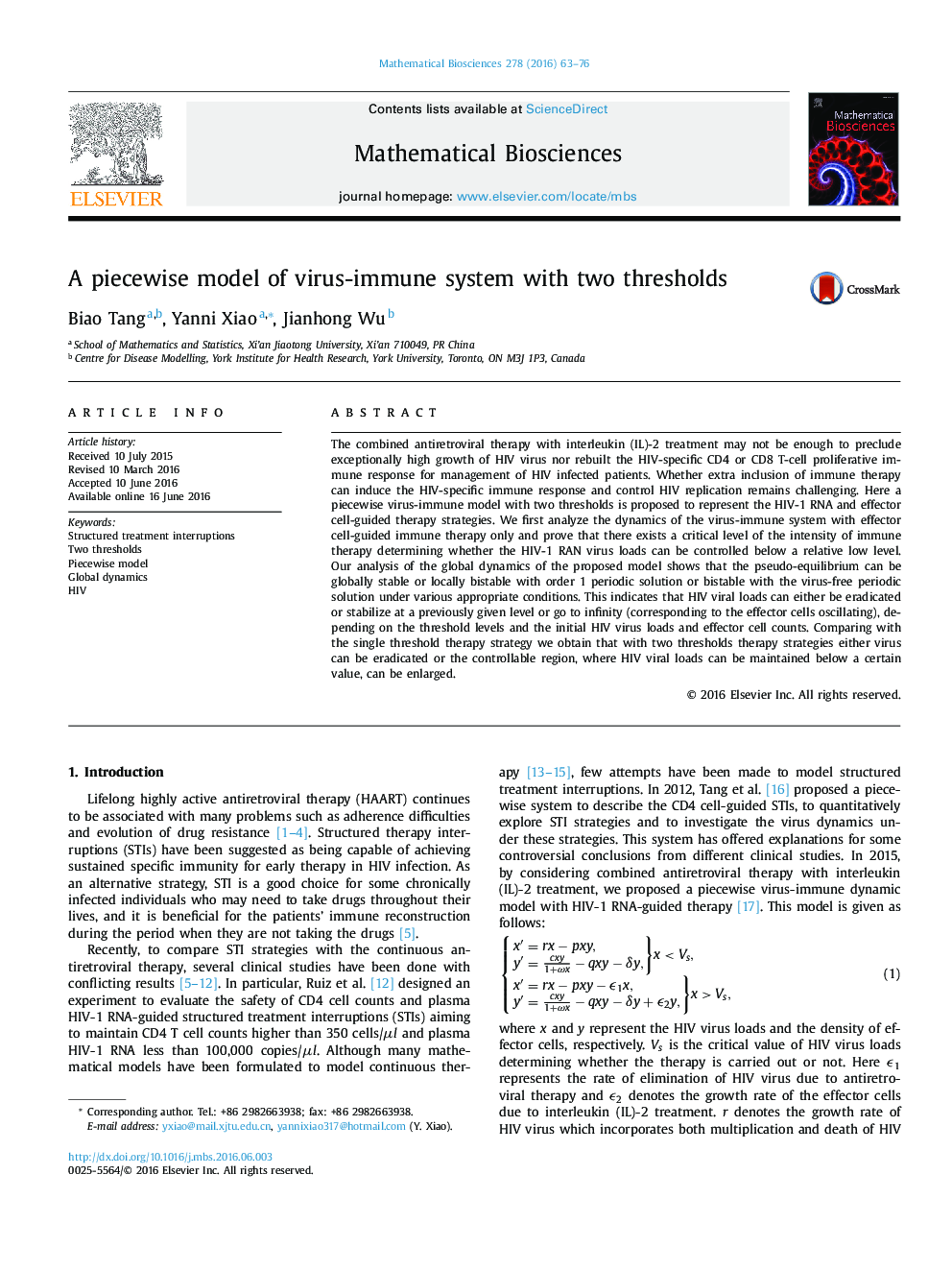| Article ID | Journal | Published Year | Pages | File Type |
|---|---|---|---|---|
| 4499877 | Mathematical Biosciences | 2016 | 14 Pages |
•We proposed a novel mathematical model with two thresholds guided therapy for HIV patients.•Analytical techniques of the impulsive and Filippov systems are used to address global dynamics.•The pseudo-equilibrium can be bi-stable with either positive or virus-free periodic solution.•The pseudo-equilibrium is proved being globally stable under certain conditions.•The controllable region can be enlarged compared with the HIV virus-guided therapy only.
The combined antiretroviral therapy with interleukin (IL)-2 treatment may not be enough to preclude exceptionally high growth of HIV virus nor rebuilt the HIV-specific CD4 or CD8 T-cell proliferative immune response for management of HIV infected patients. Whether extra inclusion of immune therapy can induce the HIV-specific immune response and control HIV replication remains challenging. Here a piecewise virus-immune model with two thresholds is proposed to represent the HIV-1 RNA and effector cell-guided therapy strategies. We first analyze the dynamics of the virus-immune system with effector cell-guided immune therapy only and prove that there exists a critical level of the intensity of immune therapy determining whether the HIV-1 RAN virus loads can be controlled below a relative low level. Our analysis of the global dynamics of the proposed model shows that the pseudo-equilibrium can be globally stable or locally bistable with order 1 periodic solution or bistable with the virus-free periodic solution under various appropriate conditions. This indicates that HIV viral loads can either be eradicated or stabilize at a previously given level or go to infinity (corresponding to the effector cells oscillating), depending on the threshold levels and the initial HIV virus loads and effector cell counts. Comparing with the single threshold therapy strategy we obtain that with two thresholds therapy strategies either virus can be eradicated or the controllable region, where HIV viral loads can be maintained below a certain value, can be enlarged.
